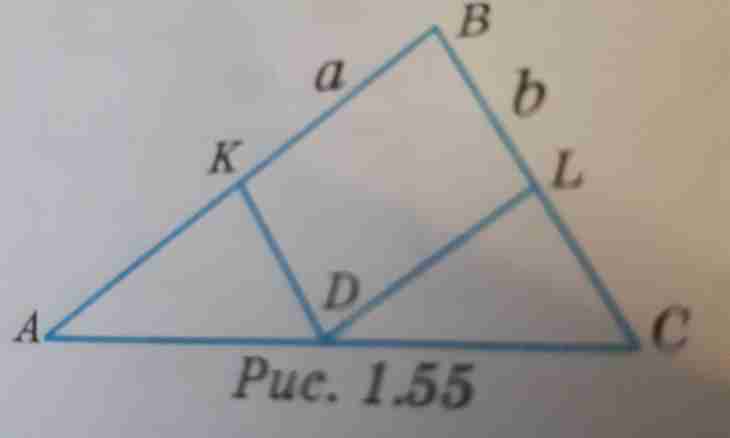The perimeter is the sum of all parties of a polygon. In regular polygons strictly certain dependence between the parties allows to simplify finding of perimeter.
Instruction
1. In any figure limited to different pieces of the broken line, the perimeter is defined by consecutive measurement of the parties and summation of results of measurement. For regular polygons the finding of perimeter is possible calculation on the formulas considering communications between the parties of a figure.
2. In any triangle with the parties and, b, about perimeter P is calculated on a formula: É = and +b+ page. At an isosceles triangle two parties are equal among themselves: and =b, and a formula of finding of perimeter becomes simpler up to P =2*a + page.
3. If in an isosceles triangle on a condition the sizes not of all parties are given, then for finding of perimeter it is possible to use other known parameters, for example the area of a triangle, its corners, heights, bisectors and medians. For example, if only two equal parties of an isosceles triangle and any of its corners are known, then find the third party according to the theorem of sine from which follows that the relation of the party of a triangle to a sine of an opposite corner is a constant for this triangle. Then the unknown party can be expressed through known: a=b*SinA/SinB, where And - a corner against the unknown party and, In - a corner against the known party of b.
4. If the area S isosceles triangles and its basis of b is known, then from a formula for determination of the area of a triangle of S=b*h/2 find h height: h=2*S/b. This height lowered on b basis divides the set isosceles triangle into two equal rectangular triangles. Sides of an of an initial isosceles triangle are hypotenuses of rectangular triangles. On Pythagorean theorem the square of a hypotenuse is equal to the sum of squares of legs of b and h. Then the perimeter P isosceles triangles is calculated on a formula: P=b+2 * √ (b²/4) + 4*S²/b²).

